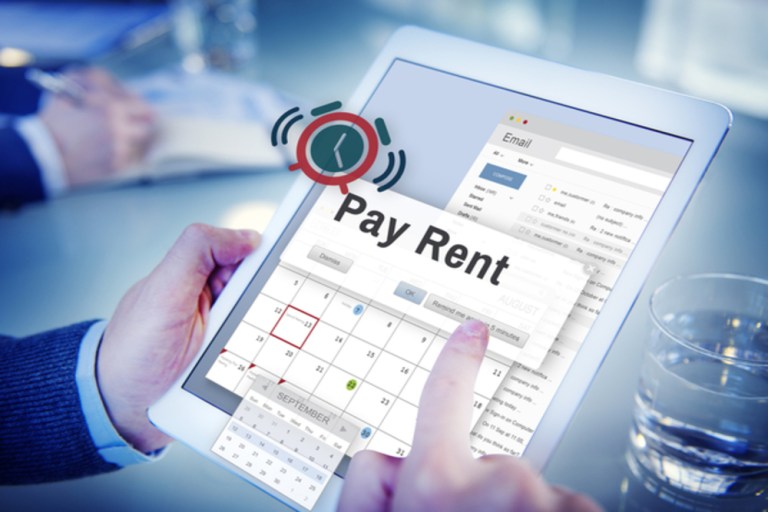
The check, it seems, is not in the mail. Today’s renters, particularly young ones, increasingly expect to pay landlords using modern payment methods. That means property management companies need to keep up to accommodate them. October’s Developer Tracker™ features an interview with Kate Hampton, vice president of ResidentPay at Entrata, about the payments hurdles property management companies are facing, along with the latest developer news and a directory of 146 players, including six new additions.
Owning a home might still be a significant piece of the American Dream, but with two-thirds of American millennials currently renting, it could be a far-fetched dream for young renters.
For Entrata, a payments processor for large property management companies, younger renters alone account for the majority of the $1.6 billion in rent payments it processes every month.
PYMNTS recently caught up with Kate Hampton, vice president of ResidentPay at Entrata, about the payments-related hurdles property management companies are facing at a time when checks are falling out of favor with renters — particularly younger ones.
Transitioning from traditional to alternative payments
For decades, checks have long been the primary method for rental payments, but for millennials, everything is changing. When it comes to rental payments, companies are fast recognizing how important it is to offer solutions that match their needs.
“The rental demographic is relatively young,” Hampton said. “This affects how they prefer to conduct business with their apartment community, which includes paying rent.”
Some of these younger renters have never written a check, Hampton said, so the “old way” of accepting payments is not natural to them. Many of these same residents don’t have a computer, she said, and have instead developed a reliance on their smartphones to access the internet, which makes it crucial for property management companies to offer viable apps.
Making strides in app, software tech
Developing a solution that meets the needs of millennial renters, more than anything, involves understanding the human element of rental payment processing. This is a challenge, Hampton said, that traditional property management software providers continue to face. As a result, solutions have been developed that have not solved actual user needs.
So, when Entrata set out to develop its software, it took measures to incorporate residents’ insights and feedback from property management companies. Based on its research, the company also developed its ResidentPortal app, which released in Dec. 2015.
The company’s iOS and Android apps feature fingerprint authentication, enabling users to make a payment using voice commands and allowing users to check their balance and submit a maintenance request. The apps also enable users to store new payment methods with their mobile camera.
“If you say the words ‘pay my rent’ without even having the app open, the operating system automatically deep links to the system and the payments screen,” Hampton said. “We auto-populate everything we know … what the balance is, what was the last payment method used, so the user literally pays the rent with a single tap.”
To keep up with the ever-changing market needs, the company has built its mobile offerings on a scalable architecture that allows it to accommodate new offerings, Hampton said.
Are AI, chatbots key to rental payments’ future?
With consumer demands changing, rental payment processing companies, such as Entrata, routinely evaluate demographics and user behavior data to identify current and future trends.
After gathering feedback from renters, the company learned that residents preferred to communicate via instant messaging instead of email, Hampton said. Entrata has since begun working on a Facebook chatbot integration that allows renters to keep in touch with their property management company.
Hampton said payments will continue to evolve, adding that they should be contextual, functional and not tied to a single device. Tenants should be able to pay their rent seamlessly whenever and wherever they go, she said, adding that the entire transaction should take a few seconds without them having to physically touch a device. To this end, the company is delving into the AI space with the intention of simplifying the payments process.
“Artificial intelligence behind the chatbot recognizes what action the user is wanting to perform and presents the resident with the amount owed and stored payment methods,” she said. “The resident can pay their rent with a single tap.”
As the company continues developing its Facebook chatbot, it is focusing its payment solution to help residents transition away from paper checks and money orders. The solution, dubbed ResidentPay, launched three years ago and processes ACH transactions, cash/money orders and credit cards and lets users scan their checks. Within four months of its launch, the number of participants shifting from paper to online payments doubled, according to Hampton.
The company is also running a pilot program in partnership with Visa that offers cost-effective, secure payment authorization and processing for the multi-family rental industry.
AIs and chatbots aside, Hampton believes that home automation might just be the next big thing in the property management space — especially with players like Amazon opening up their API to any device with a basic speaker and a microphone.
“This means the resident will be able to interact with their property through the app, their car, their watch, Amazon Echo, you name it,” she said.
From home automation to payments innovation, technology is playing a significant role in the evolution of the rental payment process for the masses.
To download the October edition of the PYMNTS.com Developer Tracker™, click the button below…
About The Tracker
The PYMNTS.com Developer Tracker™, powered by Vantiv, provides the payments ecosystem with a view into how software developers are using new technologies to create innovative business opportunities and enable merchants to optimize the ways in which they engage with shoppers today. The developer community within the tracker is separated into three categories: Shopping and Payments, Operations and Marketing.